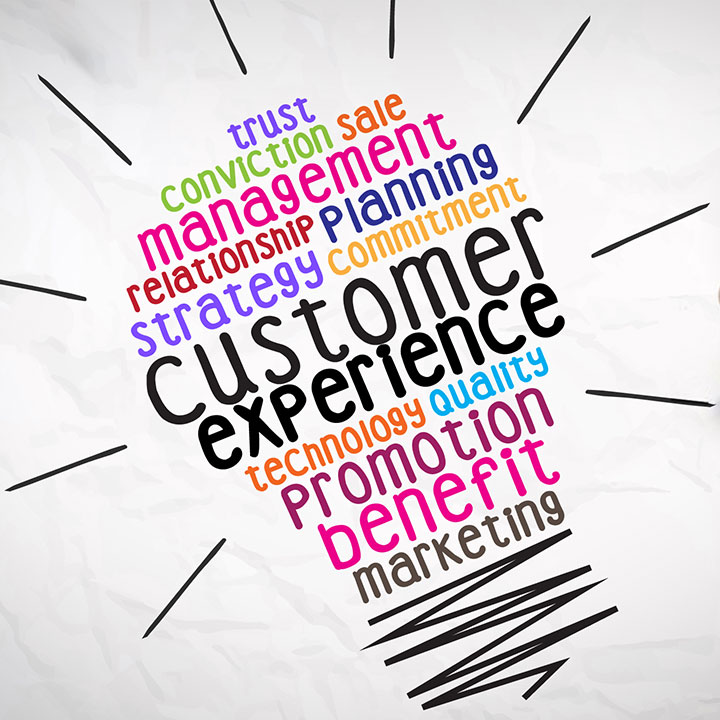CX Focused Metrics to Drive Your Organization

A business performance can be looked at from different perspectives, particularly when we are assessing said performance from a Customer Experience point of view. Pursuing and implementing a Customer Experience initiative is a long and complicated journey and it is imperative that we put the proper mechanisms in place to monitor and track its efficiency and results. It will allow us to evaluate our performance and take the appropriate corrective measures.
The most common metric organizations use is Customer Satisfaction, or CSAT. Even if the measure is effective, it does not cover all the aspects from a customer perception perspective. That is why we need to introduce measures and metrics that will cover the aspects missed by CSAT.
The first metric is the Net Promoter System, or NPS. A Net Promoter system (developed by Bain Company) is a management philosophy, a way of running a business. Net Promoter companies commit to specific processes and systems that help everyone focus on earning the passionate loyalty of both customers and employees. The business payoffs are substantial. Loyal, passionate customers stay longer, spend more, contribute suggestions and sing your company’s praises to friends and colleagues. Loyal, passionate employees love working for you, come up with new ideas and go the extra mile to delight customers. That’s why loyalty correlates so strongly with sustainable, profitable organic growth.
NPS’ elements are based on four major actionable principles, namely:
- Solid analytics: based on the availability of reliable metrics, on the loyalty of economics and on root cause analysis.
- Frontline activation: based on closed-loop procedures, learning and action.
- Robust operational infrastructure
- Leadership and communication
NPS relies on a constant flow of data and information that will lead to, after being processed and analyzed by the system, identifying the daily actions that will improve customer satisfaction and increase loyalty, resulting in sustainable growth for the organization.
The second metric that we need to look at is the Voice of the Customer. A Voice of Customer Program identifies the strengths and weaknesses of an organizations customer service delivery across the customer life cycle and interaction touch points. A Voice of Customer program consists of the on-going collection of enterprise-wide customer service feedback. This feedback is collected using both traditional market research techniques and, crucially, information already collected by the organization e.g. phone calls, complaints, letters, emails and social media.
The key steps to implementing a VoC program are:
- Identify customer segments
- Identify customer touch points
- Develop customer feedback mechanisms
- Develop reporting processes
- Establish customer immersion
This provides a rich information source to better understand how customer segments respond to a service interaction with organizations therefore better able to implement a continuous process of customer experience improvement.
The third relatively new but equally important metric is Customer Effort Score, or CES. It’s the newest metric to gain popularity in the effort to capture customer satisfaction. Extensive research over 5 years by CEB, the team that created it, showed that once a customer had received a satisfactory experience there was very little increase in loyalty by wowing them even further. Research found that the real uplift in loyalty came from having a very poor customer experience to having one that meets their expectations. The best way of bumping an experience up to satisfactory, according to the research, is to remove as many of the barriers as possible from the customer’s path. In other words, reducing customer efforts in interacting with an organization is a positive influencing factor on customer experience.
The typical obstacles customers face when dealing with organizations are:
- An overly complex IVR with many dead end choices
- Multiple transfers between departments
- Having to call in multiple times to resolve a problem
- Not listening to preferences or selections made
- Having to switch channel from social, to email, to phone to resolve a problem.
To evolve towards an “effortless” Customer Experience environment, organizations must pursue the following:
- Avoid channel switching
- Prevent next likely issues
- Practice experience engineering
- Enable CSRs to reduce effort
- Capture and measure effort reduction
- Proactively seek customer feedback
Understanding these metrics and including then in the culture of any organization will provide a 360 degree view of customer perception, satisfaction and ultimately advocacy.
Let's Chat!
Tell me how I can help you?
Got questions or ideas? Want a free consult? I’m just a click away. Reach out and let’s kickstart your success journey!
